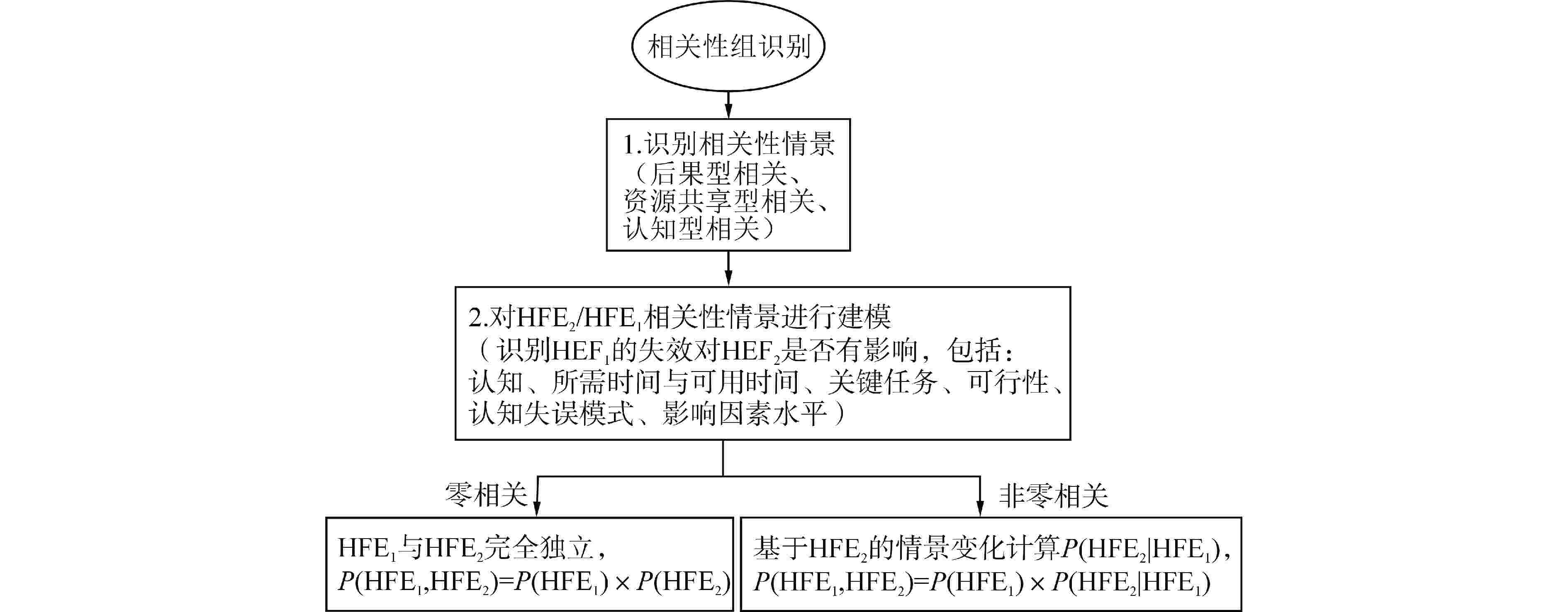Research on the Application of IDHEAS Human Event Dependency Analysis Method
-
摘要: 相关性问题是人员可靠性分析(HRA)中重点考虑的问题之一,但现行应用的相关性分析方法存在基础数据匮乏,认知理论基础不足,影响因素水平选取原则不明确等问题,导致分析结果过于保守,稳定性较差。为此,美国核管理委员会(NRC)基于人员失误事件综合分析系统(IDHEAS)行为认知模型建立了IDHEAS相关性模型,并提出了IDHEAS相关性分析方法(IDHEAS-DEP)。本文对IDHEAS-DEP开展了系统性的研究,对实施流程和要点进行分析归纳,选取一级概率安全分析(PSA)典型C类人因事件组进行了实例分析,并与其他相关性处理方法进行了定量比较。理论研究和实例分析表明,IDHEAS-DEP能在一定程度上解决现有相关性分析方法基础理论不足以及分析结果过于保守的问题,且该方法的筛选分析普适性更高,在工程上更具备可实施性。但其仍需解决与其他HRA方法的接口问题,最小联合人误概率取值的确定也是该方法未来需要完善的方向。
-
关键词:
- 人员可靠性 /
- 相关性 /
- 人员失误事件综合分析系统(IDHEAS)
Abstract: Dependency is one of the most important issues in human reliability analysis (HRA). However, the existing dependency analysis methods have some problems, such as lack of basic data, insufficient cognitive theoretical foundation, and unclear selection principles of influencing factor levels, which lead to overly conservative analysis results and poor stability. For this reason, the Nuclear Regulatory Commission (NRC) of the United States established the IDHEAS dependency model based on the behavioral cognitive model of IDHEAS, and put forward the IDHEAS dependency analysis method (IDHEAS-DEP). In this paper, IDHEAS-DEP is systematically studied, the implementation process and key points are analyzed and summarized, and a typical category C human factor event group of Level 1 probabilistic safety analysis (PSA) is selected for example analysis, and a quantitative comparison is made with other dependency analysis methods. Theoretical research and case analysis show that IDHEAS-DEP can solve the problems of insufficient basic theory and conservative analysis results of existing dependency analysis methods to a certain extent, and the screening analysis of this method is more universal and practical in engineering. However, it still needs to solve the interface problem with other HRA methods, and the determination of the minimum joint human error probability is also the direction that this method needs to be improved in the future. -
表 1 相关性因素及影响水平取值表
Table 1. Dependency Factors and Dependency Impacts
相关性关系 相关性因素 相关性影响 零 低 中 高 R1功能或系统 R1.1相同功能或系统导致的认知型相关 0 5×10−2 1×10−1 3×10−1 R1.2相同功能或系统导致的后果型相关 0 1×10−2 5×10−2 2×10−1 R1.3相同功能或系统导致的资源共享型相关 0 2×10−3 1×10−2 5×10−2 R2时间 R2.1操作时间接近导致的后果型相关 0(t>4) 1×10−3(3≤t<4) 1×10−2(2≤t<3) 1×10−1(1≤t<2) R2.2关键信号出现时间接近导致的后果型相关 0 5×10−3 5×10−2 1×10−1 R3人员 R3.1相同人员导致的认知型相关 0 5×10−2 1×10−1 3×10−1 R3.2相同人员导致的后果型相关 0 2×10−3 1×10−2 3×10−2 R3.3相同人员导致的资源共享型相关 0 2×10−3 1×10−2 5×10−2 R4位置 R4.1同一位置导致的后果型相关 0 2×10−3 5×10−3 2×10−2 R4.2同一位置和时间导致的后果型相关 0 2×10−3 5×10−3 7×10−3 R5规程 相同规程导致的认知型相关 0 5×10−3 5×10−2 3.5×10−1 t—可用时间/所需时间 表 2 预确定分析
Table 2. Predetermination Analysis
相关性关系 评价原则及依据 功能或系统 √同一系统或功能
□系统冗余列中相似部件或设备
依据:使用同一系统(RIS)时间 √执行时间接近
□线索出现时间接近
依据:规程步骤相邻班组 √相同的班组 位置 √同一位置执行
□受相同环境条件的影响(例如,高温、低温、高辐射、可视性差等)
依据:均在主控室操作,没有已知的环境因素对可靠性结果产生影响规程 √使用同一规程
依据:使用了相同的规程评价原则全部勾选代表完全相关;部分勾选代表有相关性,需要进一步进行筛选分析或详细分析;全未勾选代表零相关 表 3 筛选分析
Table 3. Screening Analysis
相关性关系 相关性因素 排除依据/影响因素水平判断原则与依据 相关性水平 R1功能或系统 R1.1相同功能或系统导致的认知型相关 √常规培训场景可以涵盖两人因事件
依据:LOCA事故是常规培训场景,通常涵盖两人因事件操作内容Pd(R1)=0 R1.2相同功能或系统导致的后果型相关 √HFE1失败不会对HFE2所需的线索产生影响
依据:操作对象为不同的阀门R1.3相同功能或系统导致的资源共享型相关 √有充足时间按顺序使用这些共用资源、设备完成任务
依据:中低压安注共用相同的水源,但水源不足的情况下,有充足时间执行调用其他水源完成操作R2 时间 R2.1时间接近导致后果型相关 √HFE2的可用时间/需求时间大于4
√线索可用并且明确,且有充足的时间执行动作
依据:HFE1失败会导致HFE2可用时间减少,但时间窗口为5 h,操作5 min,时间充足,规程明确,不会造成任何后果Pd(R2)=0 R3人员 R3.1相同人员导致的认知型相关 √培训和经验可以避免对情景产生误解
依据:LOCA事故是常规培训场景Pd(R3)=1×10−2 R3.2相同人员导致的后果型相关 无① 相关性水平中:Pd=1×10−2
√同一人员同时执行HFE1和HFE2,且HFE2不需要特别复杂的诊断
依据:HFE1和HFE2规程步骤相邻,且由同一人员执行,但HFE2规程明确,操作简单R3.3相同人员导致的资源共享型相关 √人员配备充足且工作规范执行良好
√人员配置、工作量和管理程序与培训相似
√采用最低人员配置足以在遵守工作规范情况下完成所有任务R4位置 R4.1同一位置导致的后果型相关 √HFE1失败对工作环境没有影响 Pd(R4)=0 R4.2同一位置和时间导致的后果型相关 √HFE1可以直接操作,不需要持续关注
依据:仅需主控室开对应阀门,不需要持续关注R5规程 相同规程导致的认知型相关 √规程清晰,并经过良好培训
√经过培训,能根据实际情况使用该规程Pd(R5)=0 注:①无表示没有满足条件的排除依据,故进一步进行对应的相关性影响因素水平评价与取值,即后面一栏内容 表 4 结果比较
Table 4. Comparison of Results
相关性方法 相关性水平 原值 修正值 割集CDF 总CDF/% SPAR-H 完全 1.71×10−3 1 9.24×10−8 45.9 NUREH-1921 高 1.71×10−3 5.01×10−1 8.12×10−8 42.7 IDHEAS 筛选分析 相同人员导致的认知型相关性水平-中 1.71×10−3 1.17×10−2 7.02×10−8 39.2 详细分析 — 1.71×10−3 1.73×10−3 7.00×10−8 39.1 -
[1] 国家能源局. RK应用于核电厂的一级概率安全评价 第1部分: 总体要求: NB/T 20037.1-2017[S]. 北京: 原子能出版社,2017. [2] 张佳佳,田秀峰,宫宇,等. 核电厂HRA相关性问题研究及应用[J]. 核科学与工程,2021, 41(3): 593-598. doi: 10.3969/j.issn.0258-0918.2021.03.021 [3] ASME. Addenda to ASME/ANS RA-S–2008 Standard for level 1/large early release frequency probabilistic risk assessment for nuclear power plant applications: ASME/ANS RA-Sa-2009[S]. New York: American Society of Mechanical Engineers, 2009. [4] SWAIN A D. Accident sequence evaluation program: human reliability analysis procedure: NUREG/CR-4772[R]. Washington DC: U. S. Nuclear Regulatory Commission, 1987. [5] GERTMAN D I, BLACKMAN H S, MARBLE J L, et al. The SPAR-H human reliability analysis method: NUREG/CR-6883[R]. Washington DC: U. S. Nuclear Regulatory Commission, 2005. [6] NORELL M. EPRI/NRC-RES fire human reliability analysis guidelines-final report: NUREG-1921[R]. Washington DC: U. S. Nuclear Regulatory Commission and Electric Power Research Institute, 2012. [7] PARRY G W, FORESTER J A, DANG V N, et al. IDHEAS - an integrated decision-tree human event analysis system for human reliability analysis[J]. Transactions of the American Nuclear Society, 2013, 109(2): 2088-2090. [8] XING J, CHANG Y J, DE JESUS SEGARRA J. The general methodology of an integrated human event analysis system (IDHEAS-G): NUGEG-2198[R]. Washington: U. S. Nuclear Regulatory Commission, 2021. [9] KICHLINE M, XING J, CHANG Y J, et al. Integrated human event analysis system dependency analysis guidance (IDHEAS-DEP): RIL 2021-14[R]. Washington: U. S. Nuclear Regulatory Commission, 2021. [10] SWAIN A D, GUTTMANN H E. Handbook of human-reliability analysis with emphasis on nuclear power plant applications. Final report: NUREG/CR-1278[R]. Albuquerque: Sandia National Lab. , 1983. [11] 刘鑫伟,谢永骥,田秀峰,等. 人员可靠性分析中的相关性处理方法[J]. 核工程研究与设计,2017(4): 111-114. [12] SU X Y, MAHADEVAN S, XU P D, et al. Inclusion of task dependence in human reliability analysis[J]. Reliability Engineering & System Safety, 2014, 128: 41-55. -






 下载:
下载:



